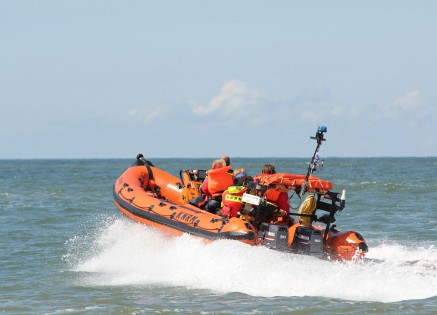Copyright © 2025 lmitac.com All Rights Reserved. Contact - Terms and Conditions - Privacy Policy - Quality Policy - Become an instructor - Vacancies - Sitemap
London Maritime Academy is a trade name for London Premier Groupversion: 2.9.0
London Maritime Academy is a trade name for London Premier Group

Posted on : 6/5/2025, 10:04:25 PM
In a fast-paced world that demands precision and efficiency, autonomous navigation technology emerges as a revolutionary solution that addresses fundamental problems facing individuals and businesses. Are you tired of human errors that lead to accidents? Are you looking for a method that makes a real difference in efficiency and safety? Then this article is designed especially for you. Technology is no longer a luxury; it has become a necessity in transportation, industry, agriculture, and exploration in the USA or elsewhere.
Understanding the concept of autonomous navigation is the first step to entering a world reliant on artificial intelligence and intelligent systems. In this guide, we explore what this concept is, its direct impact, and best practices for implementation, covering topics from sensors to algorithms, from robotics to dynamic path planning, to provide an in-depth overview.
Autonomous navigation refers to the ability of any vehicle or device to navigate its environment independently without human intervention. This capability relies on advanced integration between sensors, AI algorithms, and data processing platforms, enabling devices to navigate safely in unstructured environments using maps and environmental information.
This concept applies to a wide range of vehicles and robots, from self-driving cars to autonomous ships and vessels, industrial robots, and rovers. Autonomous Navigation is not just an idea; it is an integrated framework comprising control systems, localization modules, and real-time planning algorithms.
However, the core components include:
Why do we really need autonomous navigation? Because operator error, poor situational awareness, and delayed response to hazards have become a real threat. This technology reduces risk, improves accuracy, and enables ideal solutions in autonomous missions or in environments difficult for humans to interact with, such as space or deep space.
In robotics, for example, robots use lidar, perception units, and camera-based systems to understand their surroundings and navigate seamlessly. This makes them ideal for warehouses, agricultural platforms, and even Mars reconnaissance rovers.
In the driving sector, autonomous navigation is key to developing cars that can plan routes, make immediate decisions, and avoid obstacles using deep learning algorithms.
The system isn't limited to navigation alone; it extends to mapping, positioning, and semantic understanding of the environment. This distinguishes it as an intelligent solution designed to adapt to local environments, whether you're in urban cities or offshore areas.
Of course, knowledge builds confidence. For this reason, operators must learn to navigate using these systems and gain a comprehensive understanding of system limitations. Developers need to master software engineering, autonomous systems frameworks such as ROS, and the handling of GPS data, sensor fusion, and mapping systems—all of which are covered extensively in maritime engineering courses in London.
Relying on simulation platforms and testing performance in realistic environments enhances robust performance. Systems should be reviewed using benchmark datasets to determine accurate location tracking and adaptability to changing environments. This ensures systems are adaptive and resilient.
Collaboration among universities, companies, and governments helps establish clear standards. Thus, this facilitates the refinement of autonomous navigation solutions addressing safety, ethics, and user-friendliness. With a unified foundation, more interoperable solutions can be built.

Autonomous platforms and robots operate autonomously by integrating multiple functional units such as algorithms, sensing capabilities, actuation systems, and control software. The process involves environmental modeling of space using Light Detection and Ranging system, GPS receiver data, visual perception inputs, and robotic platforms equipped with mobile and caterpillar machines, some even designed for rubber-tracked locomotion. Autonomous navigation also proposes solutions for automated farm equipment, unmanned vehicles, and rovers tasked with reconnaissance missions in harsh environments.
Market types of autonomous navigation range from industrial machines to sophisticated vessels, and rovers. Companies—like Hyundai are active in advancing these platforms, contributing to the global industry valued in USD billions.
The goal of autonomous navigation development is to develop a robot-driven architecture powered by advanced algorithms to achieve safe, efficient mobility. These systems are designed to follow an optimal path, adapt to complex environments, and reflect continuous advancement across all levels—from centimeter-level spatial accuracy to high-level contextual comprehension of the surroundings.
For more details and in-depth insights, this approach provides a well-structured set of analyses that support informed decision-making. By addressing key challenges and maintaining a clear focus on innovation, it definitely empowers professionals to stay aligned with the latest technological advancements in autonomous navigation.